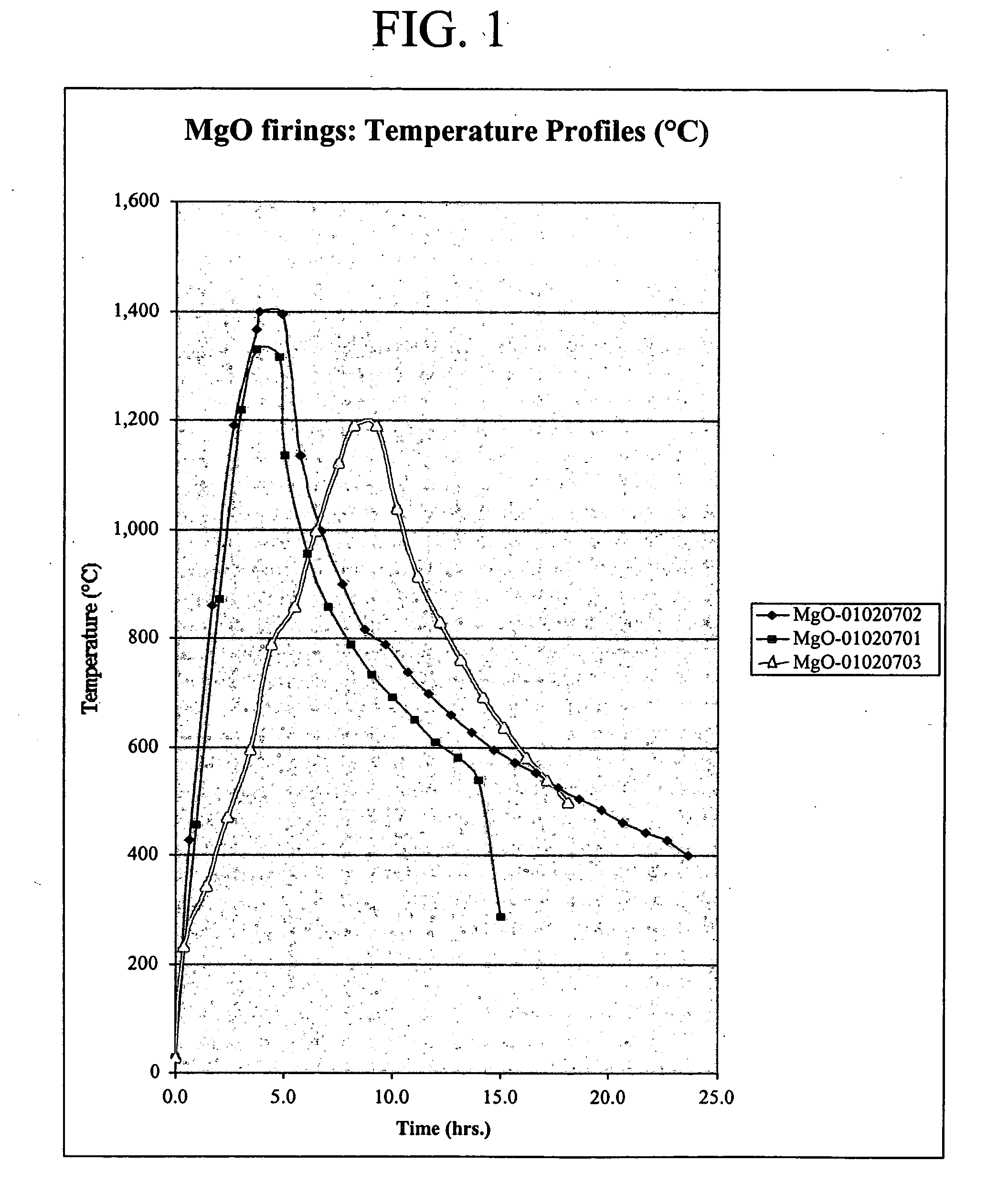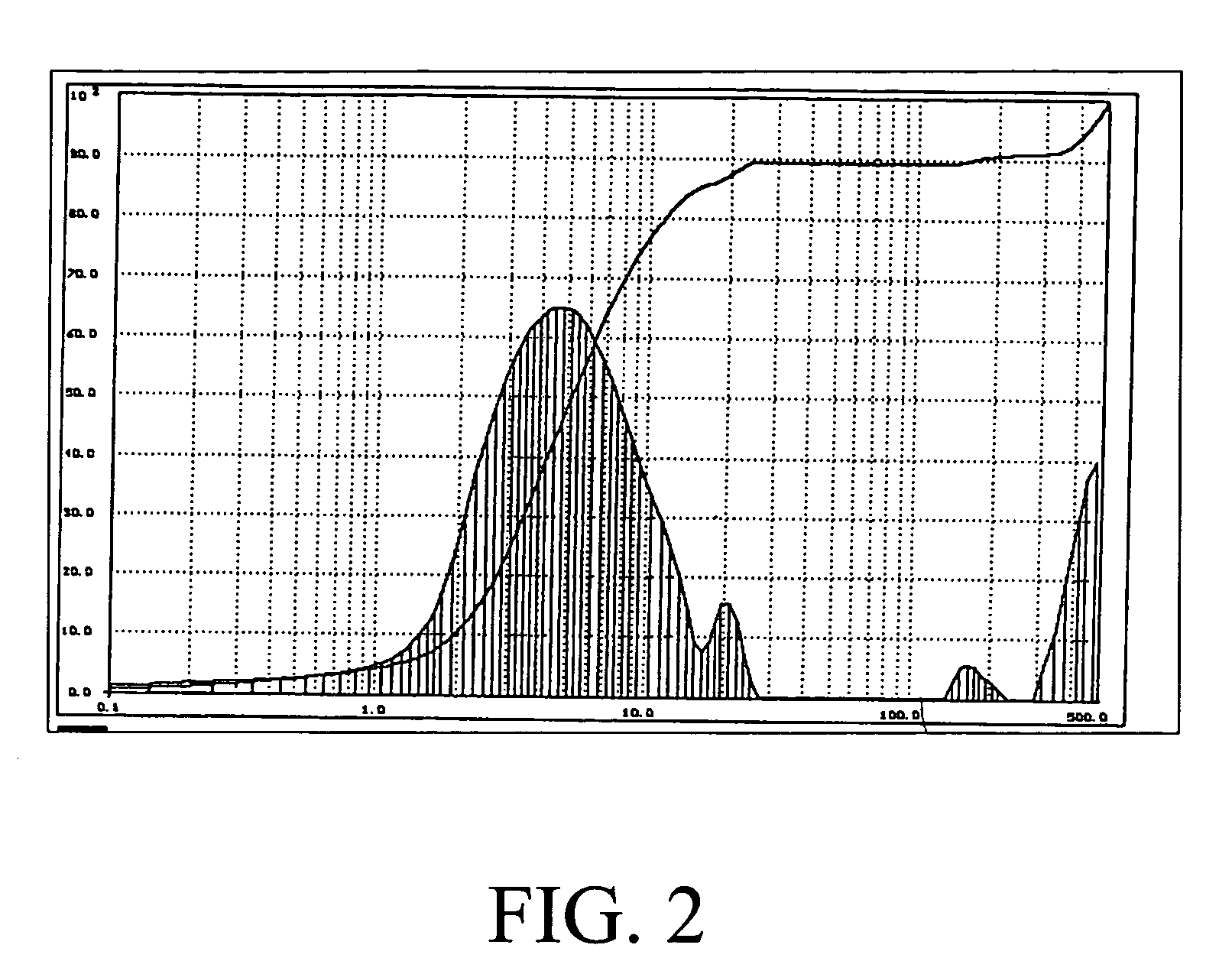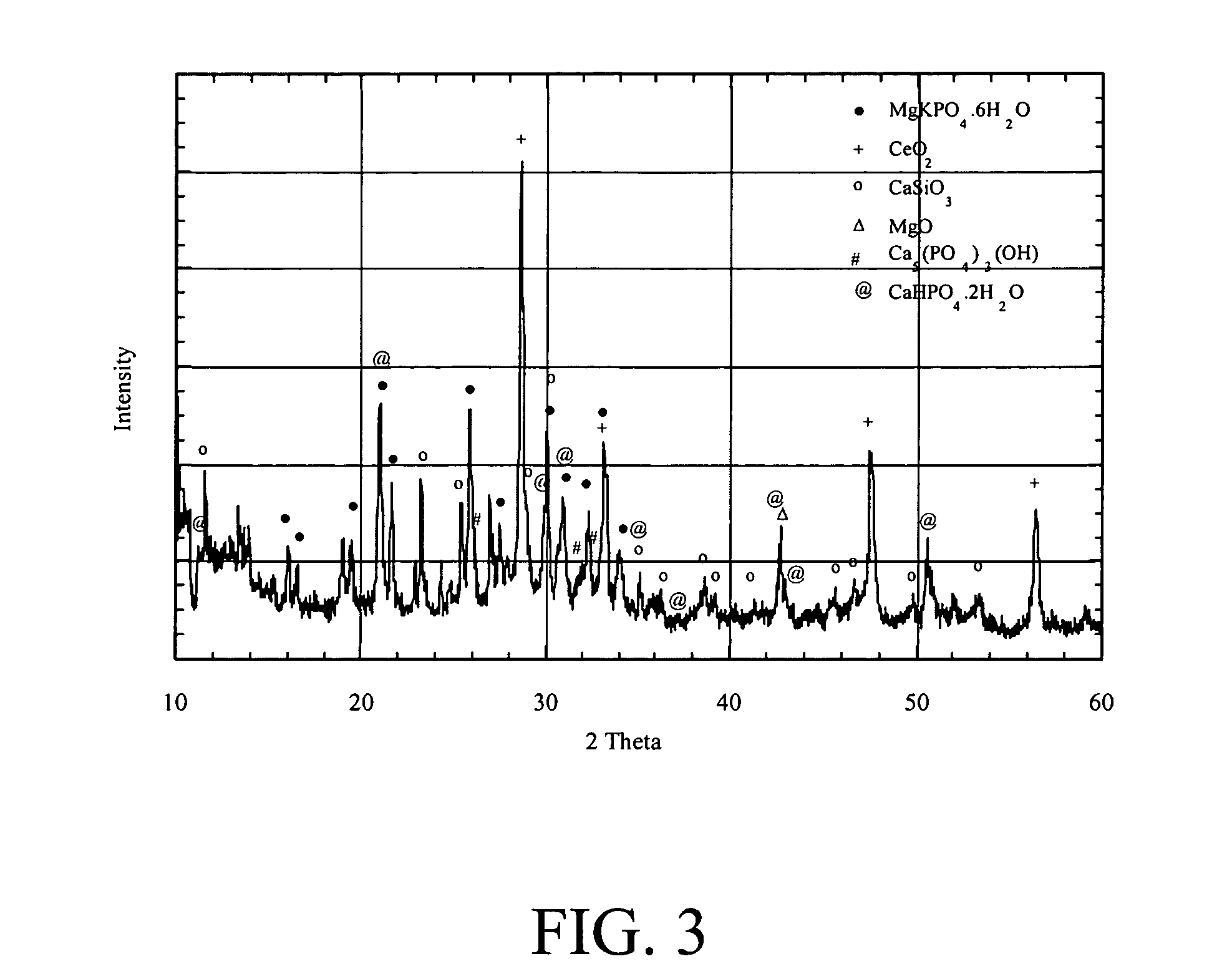Method and product for phosphosilicate slurry for use in dentistry and related bone cements
a technology of phosphosilicate slurry and bone cement, which is applied in the direction of prosthesis, dentistry, surgical adhesives, etc., can solve the problems of inability to use zinc phosphate cements in construction or waste encapsulation projects, inability to bind to metal, and inability to biocompatible components to make up, etc., to achieve the effect of reducing the ph of the paste, strong bonding, and high strength of known phosphosilicate materials
- Summary
- Abstract
- Description
- Claims
- Application Information
AI Technical Summary
Benefits of technology
Problems solved by technology
Method used
Image
Examples
example 1
[0066] In a first example of the present invention, about 1 part by weight of a liquid was mixed with about 5 parts by weight of a substantially dry powder component to form the material of the present invention. The substantially dry powder component comprised about 12.5 weight percent MgO, about 38.5 weight percent KH2PO4, about 25 weight percent CaSiO3, about 12.5 weight percent CeO2, and about 12.5 weight percent Ca5(PO4)3OH. The liquid component comprised about 11 weight percent H3PO4, and about 89 weight percent water. The powder component and the liquid component were mixed for about one minute and the mixture set in about 10 minutes. The final ceramic structure was substantially pore-free. A test of the compressive strength of the ceramic revealed that the compressive strength of the sample was about 14,000 psi. The set product had magnesium potassium phosphate hexahydrate as the bonding phase.
example 2
[0067] In a second example of the present invention, about 1 part by weight of a liquid component was mixed with about 1.875 parts by weight of a substantially dry powder component to form the material of the present invention. The substantially dry powder component comprised about 10.3 weight percent MgO, about 27.8 weight percent KH2PO4, about 41.2 weight percent CaSiO3, about 10.3 weight percent Bi2O3, and about 12.5 weight percent Ca5(PO4)3OH. The liquid component comprised about 50 weight percent MgH2PO4.H2O, and about 50 weight percent water. To maximize the strength, the MgH2PO4.H2O was dissolved in the water prior to mixing the liquid with the other powders. The powder component and solution component was mixed for about two minutes. The paste had a working time of about 2.5 minutes. The compressive strength of the material in this example was found to be about 10,017±1162 psi after about 3 days. The density was 1.89 grams / cc and the open porosity was 2%. Hydrated phases, su...
example 3
[0068] In a third example of the present invention, about 1 part by weight of a liquid component was mixed with about 1.875 parts by weight of a substantially dry powder component to form the mixture of the present invention. The substantially dry powder component comprised about 10.3 weight percent MgO, about 27.8 weight percent KH2PO4, about 41.2 weight percent CaSiO3, about 10.3 weight percent CeO2, and about 12.5 weight percent Ca5(PO4)3OH. The liquid component comprised about 50 weight percent MgH2PO4.H2O, and about 50 weight percent water. The pH of the working past was found to be about 4.34, which should not cause any acid-shock to the patient's pulp or other oral tissues. When the MgH2PO4.H2O was included in the powder mix, the strength of the final product was only about 900 psi, which is low for dental and orthopedic applications. To maximize the strength, the MgH2PO4.H2O was dissolved in the water prior to mixing the liquid with the other powders. The powder and solution...
PUM
| Property | Measurement | Unit |
|---|---|---|
| Fraction | aaaaa | aaaaa |
| Fraction | aaaaa | aaaaa |
| Fraction | aaaaa | aaaaa |
Abstract
Description
Claims
Application Information
 Login to View More
Login to View More - R&D
- Intellectual Property
- Life Sciences
- Materials
- Tech Scout
- Unparalleled Data Quality
- Higher Quality Content
- 60% Fewer Hallucinations
Browse by: Latest US Patents, China's latest patents, Technical Efficacy Thesaurus, Application Domain, Technology Topic, Popular Technical Reports.
© 2025 PatSnap. All rights reserved.Legal|Privacy policy|Modern Slavery Act Transparency Statement|Sitemap|About US| Contact US: help@patsnap.com



